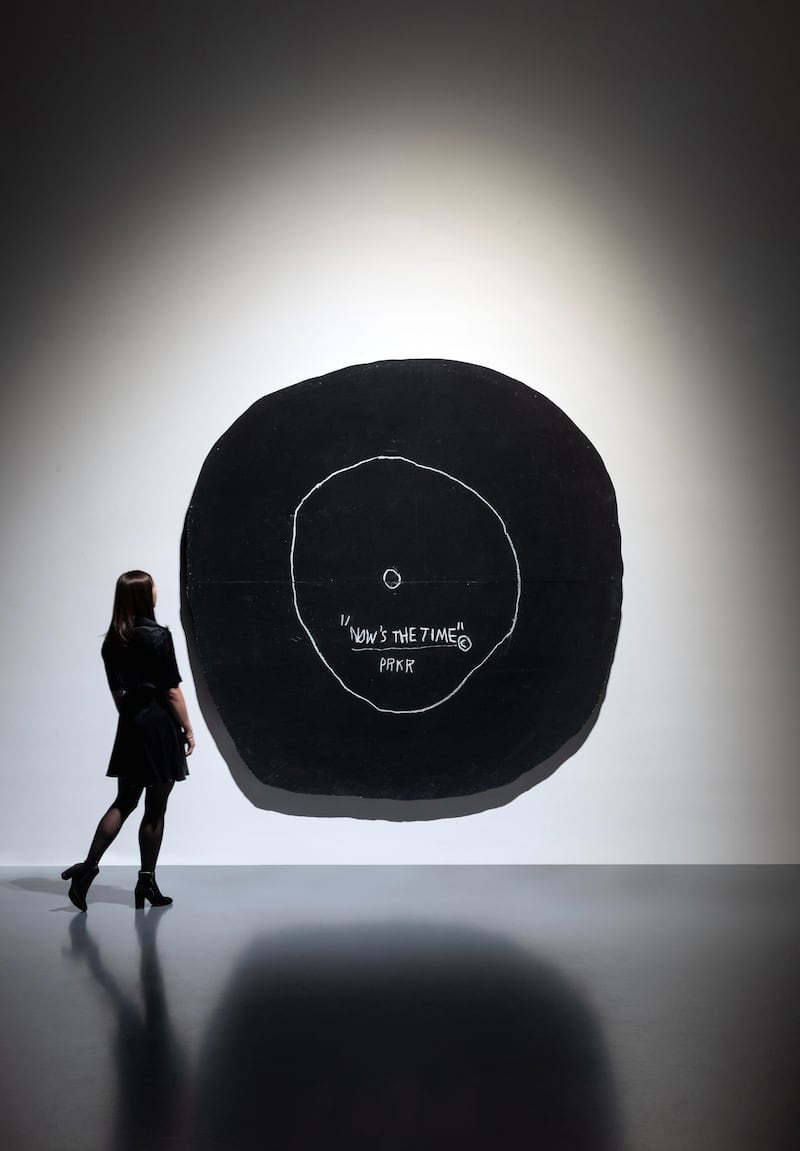Though his career lasted less than a decade – he died from a heroin overdose at the age of 27 – Jean-Michel Basquiat went from selling canvasses for $50 in his early 20s, to international fame at the time of his death. In his eulogy, the Armani suit wearing, kir royale quaffing artist was said to be “in the same league” as Pablo Picasso.
His rough handling of materials and raw, almost childlike work, resulted in an outsize reputation. When he died he left behind “917 drawings, 25 sketchbooks, 171 paintings and 85 prints”, according to Phoebe Hoban’s book Basquiat: A Quick Killing in Art.
He became the poster boy for neo expressionist artworks with jaw-dropping prices. Untitled achieved $110.5 million (€100.1 million) in 2017 through Sotheby’s New York, setting a record for an American artist. The work, which was originally purchased for $19,000 in 1984, was bought by Japanese billionaire Yusaku Maezawa, who spent more than $93 million on In This Case in 2021.
At the time of his death Basquiat was reported to be spending thousands of dollars on cocaine, while takeaway food rotted in his fridge. Such was the demand for his work, he was given an aircraft hangar in Italy with a series of blank canvases, as he was expected to create eight works a week – or so he told the New York Times Magazine. Some observers said that the pace of his output was so fast his works were barely dry when they sold.
READ MORE
His work has also been subject to forgery attempts.
An FBI investigation discovered that the much lauded exhibition, Heroes and Monsters at the Orlando Museum of Art last year, displayed 25 works by Basquiat that were fakes. The museum has scrubbed all mention of the works from its website and its since departed director Aaron De Groft (who has a PhD in art history) had said: “I have absolutely no doubt these are Basquiat’s”, adding that his reputation was on the line.
In the end, however, it was discovered that the compositions were hastily slapped on cardboard cut-offs created by a man known only as JF, who was engaged by storage unit auctioneer Michael Barzman in California to replicate the artist’s work.
It was the typeface on a FedEx label (not used until 1994) that gave the game up, to the embarrassment of the Florida museum. Barzman agreed to plead guilty to fraud in a Los Angeles court a fortnight ago.

The artist is still making headlines since his death in 1988. Two of his works are listed in upcoming sales.
Now’s the Time, said to pay homage to jazz musician Charlie Parker, and described as “one of the artists most singular and important works”, is expected to fetch in excess of $30 million at Sotheby’s Contemporary Evening in New York on May 18th, while El Gran Espectaculo (The Nile) will lead Christie’s Spring Marquee Week on May 15th, also in New York, listed at $45 million. sothebys.com and christies.com











